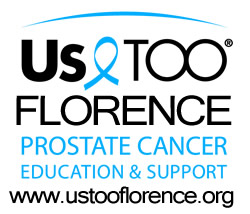|
||||||||
| Home | News You Can Use |
About Us TOO Florence |
Personal Journeys | Slideshows | Contact Us | |||
| Each man's Journey is listed under his BASIC treatment. When you click on one of the names to read a particular Journey, you may see one or more different treatments in bold lettering immediately above the Journey text. You will see (Recurrence) if they are due to a recurrence. Otherwise, they will be treatments used in conjunction with the basic treatment, i.e. Lupron with External Beam Radiation or External Beam Radiation with HDRT/Brachytherapy, etc. | |
Active Surveillance Alternative (Natural) Therapy Cryoablation - Freezing Hormone Therapy Radiation - Brachytherapy Radiation - External Beam Radiation - HDRT Surgery - Open Surgery - Robotic |
In May 1987, I had my first PSA test in Reno, Nev., due to urinary frequency and urgency problems. My PSA at that time was 9.3. I was found to have acute and chronic prostatitus, which was the cause of my urinary problems and high PSA. On June 30, 1987, I had a successful cysto-transurethral resection (roto-rooter procedure) at St. Mary's Hospital in Reno. That put me in pretty good shape for a few years with a much lower PSA of 3.8. By early 2002, I was getting up 2-3 times per night to urinate again, but my PSA was still 3.8. However, by August 2003, it had risen sharply to 6.2, then 7.3 in September which meant more testing with Dr. Peter Bergreen. One blood test he ordered was the Free PSA test. This test is often used to substantiate the results of the regular Total PSA test. While we like the Total PSA test results to be around 4.0 ng/ml or lower, the results of the Free PSA test should be high, about 26.0 ng/ml or higher. In my case, the low Free PSA of 7.0 ng/ml substantiated the high 7.3 Total PSA of September. With both PSA tests indicating prostate concerns, the next step was to perform a prostate biopsy and see what was going on. The biopsy results were not what I wanted. I did have prostate cancer with Gleason Scores of 6 which put it in the mildly aggressive category. Being in that category, I had time to consider what I would do. However, I was still somewhat upset. Everything suddenly seemed unreal. How could I possibly have cancer! If I were a younger man, I might opt for surgery to simply get rid of it. However, Dr. Bergreen said for most men in their 80s, a hormone shot every three months seemed to be the best choice. Being 82-1 /2-years-old definitely put me beyond the aggressive treatments, especially with Gleason 6 scores. January was decision time. I went to the lab for more blood work and followed that with bone and CT scans looking for cancer cells that had metastasized to my bones or organs. With all those tests coming back ok, I was ready to start my hormone treatment and on January 13, 2004, I received my Zolodex. It was my first and last hormone treatment because my PSA dropped in February to 1.6, in April to 0.60 and in July to 0.27. But, in short order, that all changed. By November 2004, my PSA rebounded to 0.85. My February 2005 PSA was 2.9, August was 4.7, November was up to 5.6 and February 2006 came in at 5.9. By that time I was under the care of urologist Dr. Doug Hoff since Dr. Bergreen no longer traveled to the Florence office. Dr. Hoff felt we would be starting Zolodex again, but wanted another PSA test in six months before doing so. That test, in August, came back at 7.1. That brought us to the discussion of when to resume treatment. There wasn't a real consensus among doctors as to when to restart treatment. Some said when the PSA reaches 7.0, some use 10.0 as their guideline and then there are all those "others." Well, in March 2008 my PSA hit 10.3. Time for action! Dr. Hoff said I had three options: continue my "watch and wait”; start hormone treatment again; or, start external beam radiation (IGRT Image Guided Radiation Therapy). I chose IGRT and for 45 consecutive weekdays (5/21/08 to 7/23/08). I rode the Friends of Florence bus to the Oregon Urology Institute Radiation Center in Springfield for my radiation treatment. Since then, my PSA has been responding appropriately by dropping to 3.8 in October 2008. In 2009, the PSA scores have been 2.8 in February; 2.1 in May and 1.6 in August. My "trend" of a decreasing PSA is exactly what should be happening. It will not reach the "undetectable" levels of men who have undergone surgery, but mine should still reach a level indicating no active prostate cancer and that is right where it is headed. |
| www.ustooflorence.org Copyright © 2010 - 2025 | |

